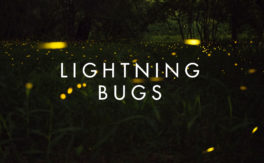Reports that MSG is dangerous stem from one anecdotal letter and years of racism.
Monosodium glutamate (MSG) is a compound made up of sodium and glutamate (an amino acid) found naturally in our bodies and in a variety of foods (tomatoes, cheeses, anchovies, mushrooms, etc). Usually when it’s mentioned people are referring to the synthesized food additive version which is added to meals to bring out their umami flavors. It’s been a commercially produced food additive since 1909 but, despite being used by tens of millions of people, 42% of Americans today think it’s dangerous. The cause of this fear goes back to one article.
Chinese Restaurant Syndrome
The April 4, 1968 edition of the New England Journal of Medicine contained a letter titled Chinese-Restaurant Syndrome by Dr. Robert Ho Man Kwok on his observations of eating American Chinese food. Kwok said that about 15 to 20 minutes after eating at a Chinese restaurant he developed a headache, weakness, heart palpitations, and numbness. He proposed several possible causes but singled out MSG as the answer. This single letter was the beginning of decades of mistrust in MSG.
The ideas of MSG side-effects and “Chinese Restaurant Syndrome” have largely been fueled by racism. Suspicion or fear of East Asian cultures, the exoticism of the “Orient”, and/or a general lack of knowledge has led some people to be suspicious of Asian cuisine. In 1969 New York City imposed regulations on MSG use in Chinese restaurants but not regulations on MSG in general. While the supposed adverse reactions to MSG should make consumers wary of any food item containing MSG, Chinese food in particular got singled out and maligned. Lots of processed western foods contain MSG, lots of plants naturally contain significant levels of MSG, and yet Doritos and shiitake mushrooms didn’t seem to get singled out quite like Chinese food did.

Safe to Eat
There is no connection between MSG and the symptoms Kwok described. The US Food & Drug Administration states that MSG is safe to eat and that there is no evidence to support claims of headaches and nausea from eating normal amounts of MSG. In double-blind studies using subjects who claimed to have sensitivity to MSG some subjects were blindly given MSG and, unaware they were eating MSG, had no ill effects. These tests were unable to reproduce any of the side-effects claimed about MSG.
MSG, like any food additive, is safe in moderation. Excess anything can make you sick. Because of the association of Chinese food to MSG, some Asian restaurants in the US have reduced their usage of MSG just to satisfy public opinion, to the detriment of the food and the customers’ taste buds.





